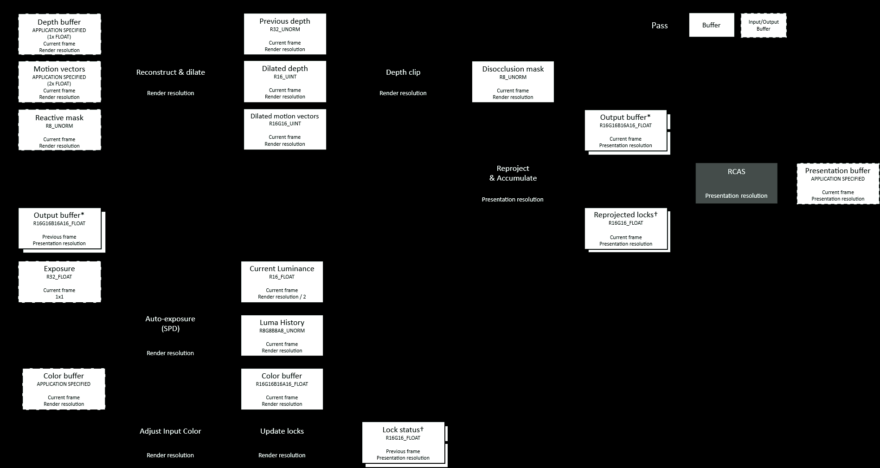Community Brings FSR 2.0 Mods Coming to More Games
Edgard Poitou / 2 years ago

With the rise in popularity of ultra high definition display resolutions like 4K in gaming, both Nvidia and AMD had to research new technologies for their graphics cards to be able to handle the monumental task of rendering in such resolutions at high framerates: upscaling algorithms. In a nutshell, it means rendering a game at a lower resolution (1080p, 1440p, etc) and then interpolating in-between pixels to make a 4K image that is very close to the native 4K image.
The Algorithm that Enables You to Play in 4K
Nvidia went first and released the Deep Learning Super Sampling “DLSS” technology you might be familiar with already, using AI acceleration present in the RTX GPU lineup, the “tensor cores”. Given this is an AI model, it must be trained in a per-game basis, which makes the task of implementing it to your game as a developer complicated, but results in a very good quality.
AMD came later from the other direction, an algorithm. Meet FidelityFX Super Resolution “FSR”. Since its not an AI, its easy to implement to games, can run on virtually any graphics card, including Nvidia’s or Intel’s, but often result in a lower quality than DLSS. The tradeoff is acceptable, because of how few games and graphics cards DLSS supports and since FSR is much easier to implement.

You can find quality comparisons between the two upscaling technologies here.
A Win for the Open Source
After AMD made their FSR 2.0 source code available to all on GitHub last month, modders have been quick to try to adapt it to their favourite games. The first notable success in the making of such a mod was on Cyberpunk 2077, by the modder ‘PotatoOfDoom’ barely a few days after the release to GitHub. Shortly after that, the modding community also successfully enabled players to use AMD’s upscaling tech in other popular titles, including Dying Light 2, Guardians of the Galaxy, Red Dead Redemption 2, Death Stranding, Metro Exodus… etc. The list is long, and is growing quickly.
These mods also work in other games by making minor changes. Hypothetically, this could mean that all DLSS-supported games could use this above-mentioned mod with tiny changes to the source code of the game. Modders are always the quickest to try and implement new technologies, but this means FSR will be officially implemented by the developers in many new games to come, starting now.
But What If You Render to Native Resolution?
Some modders are already going beyond simply using these upscaling technologies, but they are researching into tinkering their basic functionality. They decided to turn off the upscaling, and force the algorithm to render at native resolution, and then use the algorithm to improve the quality of the native image, for anti aliasing, fixing artifacts, better textures… This is far more advanced than any anti aliasing technology we know today, that be TAA, MSAA, FXAA or any of the others. They called it FSRAA, and while still very much in development, the first results on Metro Exodus and Dying Light 2 are exceptionally good, here are some comparisons.
Seeing the results a small modding managed in a few days, we can wonder if and when AMD would officially unveil FSRAA officially (or under another name).
On their part, Nvidia has been developing DLAA for a year already, with DLSS, which is already available in a few games like Elder Scrolls Online, on the RTX GPUs. Being temporal and using motion vectors, its a lot more stable in motion than TAA or MSAA, and is very noticeable on small moving elements, like grass or leaves.

Both DLSS and DLAA, as well as FSR and FSRAA are not to confuse with each other. While one is an upscaling technology that improves performance at the price of image quality, the other does exactly the opposite and improves quality at the price of performance. We cant wait to see FSR being ported to our favourite new games!



















